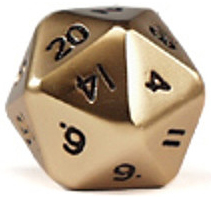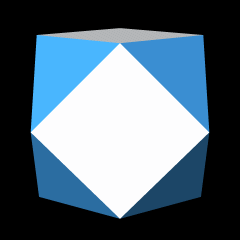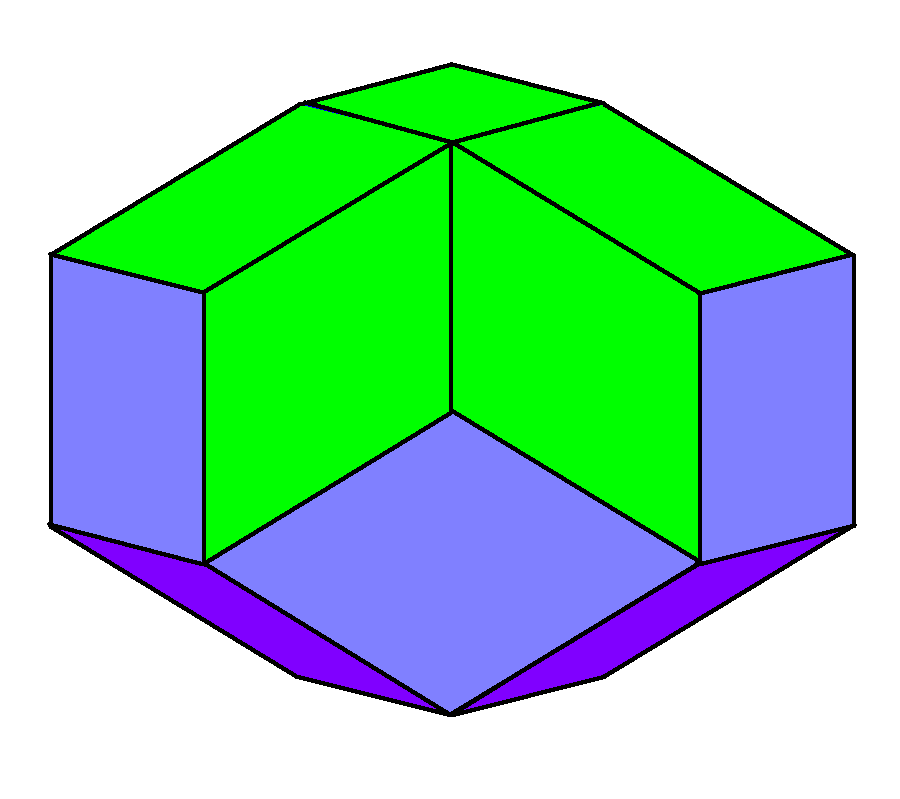icosahedron on:
[Wikipedia]
[Google]
[Amazon]

 In
In
 The great icosahedron is one of the four regular star Kepler–Poinsot polyhedra. Its
The great icosahedron is one of the four regular star Kepler–Poinsot polyhedra. Its
 The
The
 A regular icosahedron is topologically identical to a cuboctahedron with its 6 square faces bisected on diagonals with pyritohedral symmetry. The icosahedra with pyritohedral symmetry constitute an infinite family of polyhedra which include the cuboctahedron, regular icosahedron, Jessen's icosahedron, and double cover octahedron. Cyclical kinematic transformations among the members of this family exist.
A regular icosahedron is topologically identical to a cuboctahedron with its 6 square faces bisected on diagonals with pyritohedral symmetry. The icosahedra with pyritohedral symmetry constitute an infinite family of polyhedra which include the cuboctahedron, regular icosahedron, Jessen's icosahedron, and double cover octahedron. Cyclical kinematic transformations among the members of this family exist.

Icosahedron
on Mathworld.
 In
In geometry
Geometry (; ) is a branch of mathematics concerned with properties of space such as the distance, shape, size, and relative position of figures. Geometry is, along with arithmetic, one of the oldest branches of mathematics. A mathematician w ...
, an icosahedron ( or ) is a polyhedron
In geometry, a polyhedron (: polyhedra or polyhedrons; ) is a three-dimensional figure with flat polygonal Face (geometry), faces, straight Edge (geometry), edges and sharp corners or Vertex (geometry), vertices. The term "polyhedron" may refer ...
with 20 faces. The name comes . The plural can be either "icosahedra" () or "icosahedrons".
There are infinitely many non- similar shapes of icosahedra, some of them being more symmetrical than others. The best known is the ( convex, non- stellated) regular icosahedron—one of the Platonic solid
In geometry, a Platonic solid is a Convex polytope, convex, regular polyhedron in three-dimensional space, three-dimensional Euclidean space. Being a regular polyhedron means that the face (geometry), faces are congruence (geometry), congruent (id ...
s—whose faces are 20 equilateral triangle
An equilateral triangle is a triangle in which all three sides have the same length, and all three angles are equal. Because of these properties, the equilateral triangle is a regular polygon, occasionally known as the regular triangle. It is the ...
s.
Regular icosahedra
There are two objects, one convex and one nonconvex, that can both be called regular icosahedra. Each has 30 edges and 20equilateral triangle
An equilateral triangle is a triangle in which all three sides have the same length, and all three angles are equal. Because of these properties, the equilateral triangle is a regular polygon, occasionally known as the regular triangle. It is the ...
faces with five meeting at each of its twelve vertices. Both have icosahedral symmetry
In mathematics, and especially in geometry, an object has icosahedral symmetry if it has the same symmetries as a regular icosahedron. Examples of other polyhedra with icosahedral symmetry include the regular dodecahedron (the dual polyhedr ...
. The term "regular icosahedron" generally refers to the convex variety, while the nonconvex form is called a ''great icosahedron''.
Convex regular icosahedron
The convex regular icosahedron is usually referred to simply as the ''regular icosahedron'', one of the five regularPlatonic solid
In geometry, a Platonic solid is a Convex polytope, convex, regular polyhedron in three-dimensional space, three-dimensional Euclidean space. Being a regular polyhedron means that the face (geometry), faces are congruence (geometry), congruent (id ...
s, and is represented by its Schläfli symbol
In geometry, the Schläfli symbol is a notation of the form \ that defines List of regular polytopes and compounds, regular polytopes and tessellations.
The Schläfli symbol is named after the 19th-century Swiss mathematician Ludwig Schläfli, wh ...
, containing 20 triangular faces, with 5 faces meeting around each vertex.
Its dual polyhedron is the regular dodecahedron having three regular pentagonal faces around each vertex.
Great icosahedron
 The great icosahedron is one of the four regular star Kepler–Poinsot polyhedra. Its
The great icosahedron is one of the four regular star Kepler–Poinsot polyhedra. Its Schläfli symbol
In geometry, the Schläfli symbol is a notation of the form \ that defines List of regular polytopes and compounds, regular polytopes and tessellations.
The Schläfli symbol is named after the 19th-century Swiss mathematician Ludwig Schläfli, wh ...
is . Like the convex form, it also has 20 equilateral triangle faces, but its vertex figure is a pentagram rather than a pentagon, leading to geometrically intersecting faces. The intersections of the triangles do not represent new edges.
Its dual polyhedron is the great stellated dodecahedron , having three regular star pentagonal faces around each vertex.
Stellated icosahedra
Stellation is the process of extending the faces or edges of a polyhedron until they meet to form a new polyhedron. It is done symmetrically so that the resulting figure retains the overall symmetry of the parent figure. In their book '' The Fifty-Nine Icosahedra'', Coxeter et al. enumerated 59 such stellations of the regular icosahedron. Of these, many have a single face in each of the 20 face planes and so are also icosahedra. The great icosahedron is among them. Other stellations have more than one face in each plane or form compounds of simpler polyhedra. These are not strictly icosahedra, although they are often referred to as such.Pyritohedral symmetry
A ''regular icosahedron'' can be distorted or marked up as a lower pyritohedral symmetry, and is called a snub octahedron, snub tetratetrahedron, snub tetrahedron, and pseudo-icosahedron. This can be seen as an alternated truncated octahedron. If all the triangles are equilateral, the symmetry can also be distinguished by colouring the 8 and 12 triangle sets differently. Pyritohedral symmetry has the symbol (3*2), +,4 with order 24. Tetrahedral symmetry has the symbol (332), ,3sup>+, with order 12. These lower symmetries allow geometric distortions from 20 equilateral triangular faces, instead having 8 equilateral triangles and 12 congruentisosceles triangle
In geometry, an isosceles triangle () is a triangle that has two Edge (geometry), sides of equal length and two angles of equal measure. Sometimes it is specified as having ''exactly'' two sides of equal length, and sometimes as having ''at le ...
s.
These symmetries offer Coxeter diagrams: and respectively, each representing the lower symmetry to the regular icosahedron , (*532), ,3icosahedral symmetry
In mathematics, and especially in geometry, an object has icosahedral symmetry if it has the same symmetries as a regular icosahedron. Examples of other polyhedra with icosahedral symmetry include the regular dodecahedron (the dual polyhedr ...
of order 120.
Cartesian coordinates
 The
The Cartesian coordinates
In geometry, a Cartesian coordinate system (, ) in a plane is a coordinate system that specifies each point uniquely by a pair of real numbers called ''coordinates'', which are the signed distances to the point from two fixed perpendicular o ...
of the 12 vertices can be defined by the vectors defined by all the possible cyclic permutations and sign-flips of coordinates of the form (2, 1, 0). These coordinates represent the truncated octahedron with alternated vertices deleted.
This construction is called a ''snub tetrahedron'' in its regular icosahedron form, generated by the same operations carried out starting with the vector (''ϕ'', 1, 0), where ''ϕ'' is the golden ratio
In mathematics, two quantities are in the golden ratio if their ratio is the same as the ratio of their summation, sum to the larger of the two quantities. Expressed algebraically, for quantities and with , is in a golden ratio to if
\fr ...
.
Jessen's icosahedron
In Jessen's icosahedron, sometimes called ''Jessen's orthogonal icosahedron'', the 12 isosceles faces are arranged differently so that the figure is non-convex and hasright
Rights are law, legal, social, or ethics, ethical principles of freedom or Entitlement (fair division), entitlement; that is, rights are the fundamental normative rules about what is allowed of people or owed to people according to some legal sy ...
dihedral angles.
It is scissors congruent to a cube, meaning that it can be sliced into smaller polyhedral pieces that can be rearranged to form a solid cube.
Cuboctahedron
 A regular icosahedron is topologically identical to a cuboctahedron with its 6 square faces bisected on diagonals with pyritohedral symmetry. The icosahedra with pyritohedral symmetry constitute an infinite family of polyhedra which include the cuboctahedron, regular icosahedron, Jessen's icosahedron, and double cover octahedron. Cyclical kinematic transformations among the members of this family exist.
A regular icosahedron is topologically identical to a cuboctahedron with its 6 square faces bisected on diagonals with pyritohedral symmetry. The icosahedra with pyritohedral symmetry constitute an infinite family of polyhedra which include the cuboctahedron, regular icosahedron, Jessen's icosahedron, and double cover octahedron. Cyclical kinematic transformations among the members of this family exist.
Other icosahedra

Rhombic icosahedron
The rhombic icosahedron is azonohedron
In geometry, a zonohedron is a convex polyhedron that is point symmetry, centrally symmetric, every face of which is a polygon that is centrally symmetric (a zonogon). Any zonohedron may equivalently be described as the Minkowski addition, Minkows ...
made up of 20 congruent rhombs. It can be derived from the rhombic triacontahedron
The rhombic triacontahedron, sometimes simply called the triacontahedron as it is the most common thirty-faced polyhedron, is a convex polyhedron with 30 rhombus, rhombic face (geometry), faces. It has 60 edge (geometry), edges and 32 vertex ...
by removing 10 middle faces. Even though all the faces are congruent, the rhombic icosahedron is not face-transitive.
Pyramid and prism symmetries
Common icosahedra with pyramid and prism symmetries include: *19-sidedpyramid
A pyramid () is a structure whose visible surfaces are triangular in broad outline and converge toward the top, making the appearance roughly a pyramid in the geometric sense. The base of a pyramid can be of any polygon shape, such as trian ...
(plus 1 base = 20).
*18-sided prism (plus 2 ends = 20).
*9-sided antiprism (2 sets of 9 sides + 2 ends = 20).
*10-sided bipyramid (2 sets of 10 sides = 20).
*10-sided trapezohedron (2 sets of 10 sides = 20).
Johnson solids
SeveralJohnson solid
In geometry, a Johnson solid, sometimes also known as a Johnson–Zalgaller solid, is a convex polyhedron whose faces are regular polygons. They are sometimes defined to exclude the uniform polyhedrons. There are ninety-two Solid geometry, s ...
s are icosahedra:on Mathworld.
See also
* Truncated icosahedron *600-cell
In geometry, the 600-cell is the convex regular 4-polytope (four-dimensional analogue of a Platonic solid) with Schläfli symbol .
It is also known as the C600, hexacosichoron and hexacosihedroid.
It is also called a tetraplex (abbreviated from ...
* Icosoku
* Icosahedral twins - Nanoparticles which often are close to perfect icosahedra.
References
{{Authority control Geodesic polyhedra Individual graphs